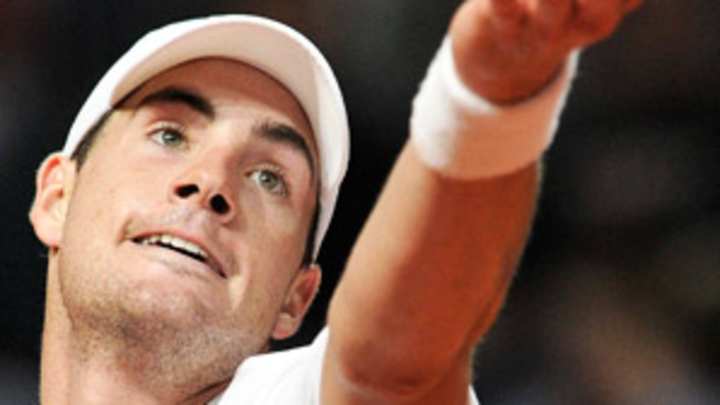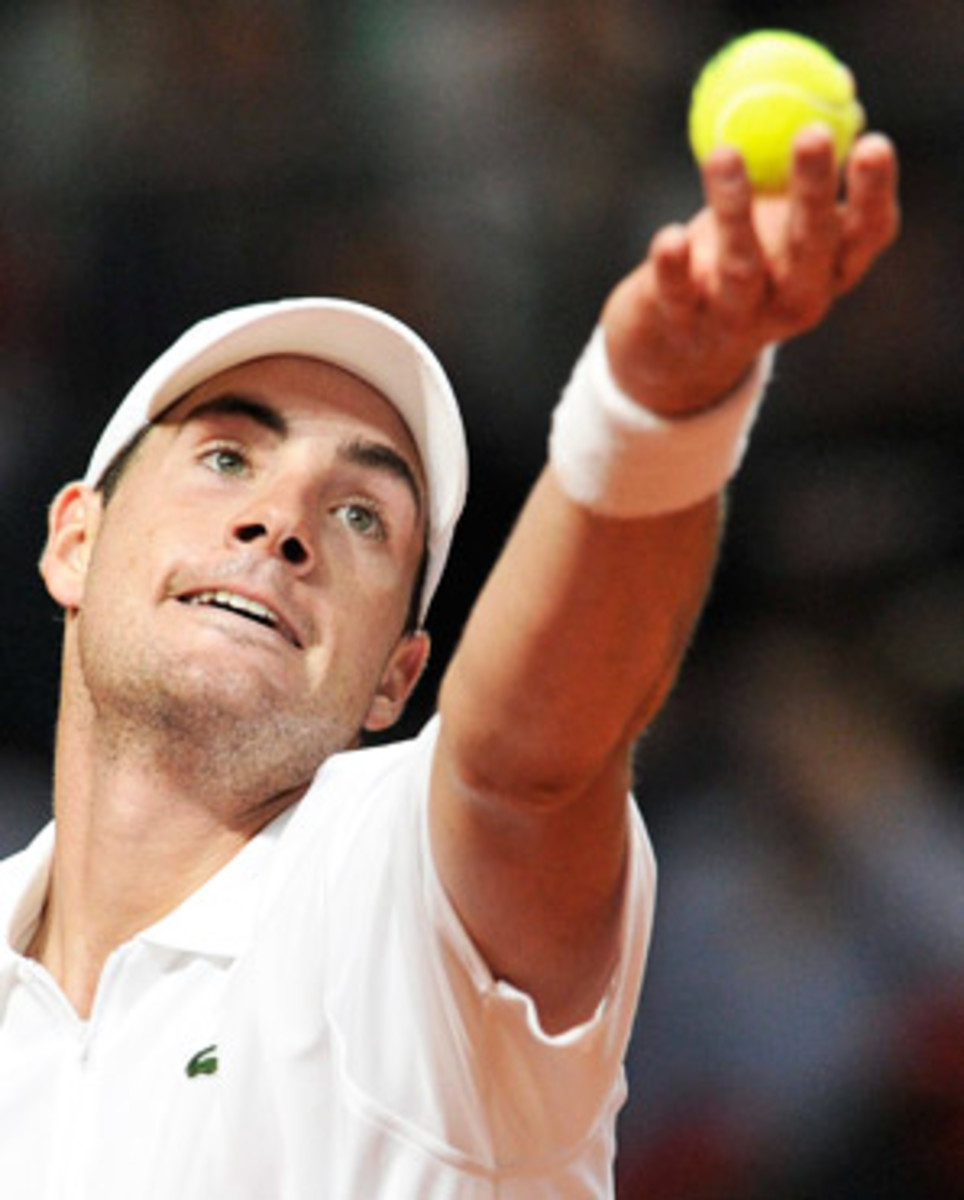The Toss: Buying the John Isner hype?


John Isner beat Roger Federer 4-6, 6-3, 7-6 (4), 6-2 in the first round of the Davis Cup, his first win over any of the Big Three. (Peter Schneider/EPA)
Last week's Toss examined how important the Davis Cup is for Roger Federer. The readers voted that it's hard to judge an individual in a team format, and therefore Federer's lack of a Davis Cup title is not terribly important. Then the U.S. team went on to sweep the Swiss 5-0. In the process, John Isner notched the biggest win of his career by downing Federer 4-6, 6-3, 7-6 (4), 6-2.
After the match, John McEnroe spoke highly of Isner, saying he "really believes [Isner] could get to a semi or final [of a Grand Slam tournament], given the right set of circumstances" and that Isner is "the most dangerous guy out there."
But is the win really going to be a turning point in Isner's career, or is it just one big match?
Today's Toss: Toss: After beating Roger Federer, should we buy into the hype around John Isner?
Courtney Nguyen: It depends on what "hype" we're talking about. The general consensus seems to be that Isner has top 10 talent and he's finally beginning to realize it, as evidenced by his victory against Federer. U.S. Davis Cup captain Jim Courier described him as a "destructive force," and McEnroe said the top players are always concerned about Isner's place in a draw. None of this is anything we didn't necessarily know before, but did his Davis Cup performance convince me that consistent top 10 success would come sooner rather than later for the Georgia boy? Absolutely.
Isner has been on a steady climb since pushing Rafael Nadal to five sets in the first round of the French Open last May. Before that match, he hadn't advanced beyond the quarterfinals in any tournament in 2011. After it, he made it past the quarterfinals five times, won two titles (Newport, Winston-Salem) and notched his best result at a major, reaching the U.S. Open quarters, where he fell to Andy Murray. The post-French Open stretch included quality victories against David Ferrer, Andy Roddick, Marcos Baghdatis and Gilles Simon.
Isner is a confidence player and it's easy to see why. When you get stuck in as many 6-4, 7-5, 7-6 sets as he does, that little extra ounce of belief goes a long way. Any slight hesitation, any doubt that creeps in when split-second decisions are made, can decide the match.
So if a five-set loss to Nadal can inspire Isner to turn around his 2011 season and see him rise from No. 39 at the time to a career-high No. 14 now, imagine what this win over Federer, in Switzerland, on clay, in front of a hostile crowd (well, as hostile as a Swiss crowd can be) is going to do for him.
"I do realize now, no matter the surface, no matter the opponent, a lot of times the ball, the point, the match is going to be in my control, no matter who I'm playing, no matter if it's Roger Federer or somebody who isn't even ranked," Isner told reporters in Fribourg, Switzerland.
The question is whether he will be able to regularly execute that high-octane, big serve/big forehand game that he used to blow Federer off the court. To be clear, he didn't beat Federer playing the way he's played most his matches. As McEnroe observed, Isner typically prefers to trade groundstrokes and try to work points to his favor. Against Federer, he blasted the ball any chance he got. When he missed, he got over it by taking an even bigger cut than the one before.
To put it in fighting terms, Federer wanted to use his footwork, his jab, his full arsenal to put on a beautiful display of boxing. Isner didn't know or care what boxing was; he just kept throwing haymakers. And on that day they landed more often than not and even the ones that missed made Federer flinch. As players like Nadal, Novak Djokovic, Juan Martin del Potro and Jo-Wilfried Tsonga have shown, if you can get into Federer's head, you have more than a fighting chance.
"The way I played today is the way I need to play in all of my matches," Isner said after his win.
The fact that he now knows that is a huge turning point. Isner is heading into a part of the season with few points to defend, so it won't be long before he's in the top 10. Who knows, maybe he'll go on an absolute tear when he hits the red clay in April. Wouldn't that be something?
Bryan Armen Graham: I always thought Isner was simply too big to succeed at the highest levels of tennis, that he lacked the variety, control and mobility to compete against the game’s truly elite players. Until last week’s headline-grabbing upset, the American’s winless record against Djokovic, Nadal and Federer seemed to bear out the theory.
[polldaddy poll=5950237]
Now Isner knows he can beat one of the alpha dogs -- and the confidence boost will serve him well as he closes in on the top 10. But until he emerges as a legitimate threat to win a major (by, say, advancing past the quarterfinals), I’m not ready to call him the most dangerous player outside the Big Four. Maybe in a one-off situation, but not within the context of a Grand Slam.
Sure, Isner can beat any player on any given day with his thunderous serve. He’s put in the work to expand his repertoire and he looks much more comfortable coming forward than in previous years. But it was those punishing groundstrokes that made the difference against Federer, and I don’t know that he can put it all together for seven straight matches at a major. And if not now, at 26, then when?
It’s been nearly a decade since an American man last won a major. And while Isner is proving he’s more than just a giant with a booming serve, I don’t see him ending the drought anytime soon. I’ll enjoy watching him make his top 10 debut (which is looking more and more probable), but sell high when it happens.
You decide: Sound off in the comments and vote in the above to let us know your thoughts about Isner.
